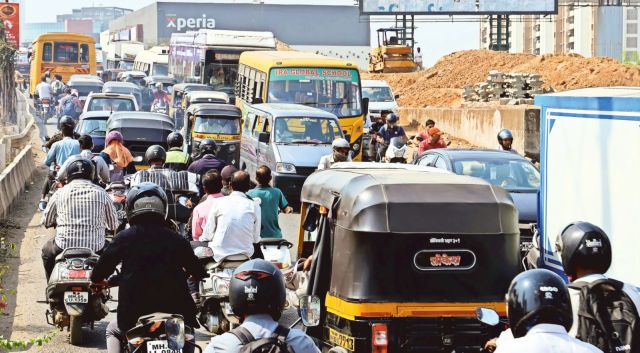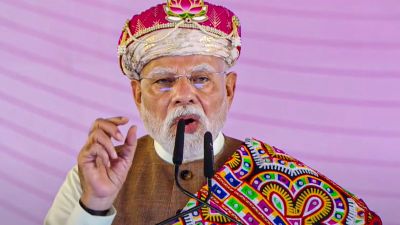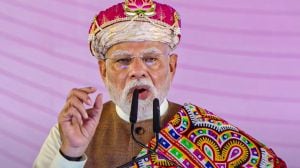Dahisar check naka: Sarnaik directs contractors to reserve lanes for heavy vehicles to ease traffic jams
Additionally, height restrictions have been placed on two lanes at each side to accommodate only cars. Asked why the toll booths were not removed entirely, the MSRDC official explained that dismantling them would require a two-day traffic block, which could lead to severe disruptions.
 To tackle the problem, Sarnaik has mandated the immediate allocation of reserved lanes for heavy vehicles in both directions, ensuring that light vehicles can move through the area more quickly and without congestion.
To tackle the problem, Sarnaik has mandated the immediate allocation of reserved lanes for heavy vehicles in both directions, ensuring that light vehicles can move through the area more quickly and without congestion.Amidst complaints of frequent traffic jams at the Dahisar check naka, Transport Minister Pratap Sarnaik has instructed toll contractors to reserve specific lanes for heavy vehicles at the check naka to ease traffic congestion in the area. Three lanes will be designated for vehicles heading to Mumbai, while two lanes will be set aside for those travelling out of the city. These lanes will be dedicated to toll collection, while the remaining lanes will be cleared for light vehicles, aiming to streamline traffic flow.
The current system on NH-48 (Mumbai-Ahmedabad) consists of 12 lanes (6+6). A representative from the Maharashtra State Road Development Corporation (MSRDC), which manages toll collection at Mumbai’s entry points, said that in the southbound direction during peak hours, seven lanes are allocated for traffic, with three reserved for light motor vehicles. Similarly, seven lanes are designated for northbound traffic in the evening. One additional lane from the opposite side is also utilised for the reverse flow.
Additionally, height restrictions have been placed on two lanes at each side to accommodate only cars. Asked why the toll booths were not removed entirely, the MSRDC official explained that dismantling them would require a two-day traffic block, which could lead to severe disruptions.
On Thursday, Sarnaik conducted an on-site inspection of the Dahisar check naka, accompanied by Mira-Bhayander Municipal Commissioner Sanjay Katkar, local traffic police officers, and toll contractors. Last year, the government, led by then CM and current Deputy CM Eknath Shinde, exempted light four-wheelers from toll charges. However, traffic jams continue to be a persistent issue during peak hours. The current toll lane configuration has contributed to slow vehicle movement, causing significant delays.
To tackle the problem, Sarnaik has mandated the immediate allocation of reserved lanes for heavy vehicles in both directions, ensuring that light vehicles can move through the area more quickly and without congestion. Additionally, signboards will be installed up to 500 metres on both sides of the road, guiding drivers to the correct lanes and improving traffic flow.








